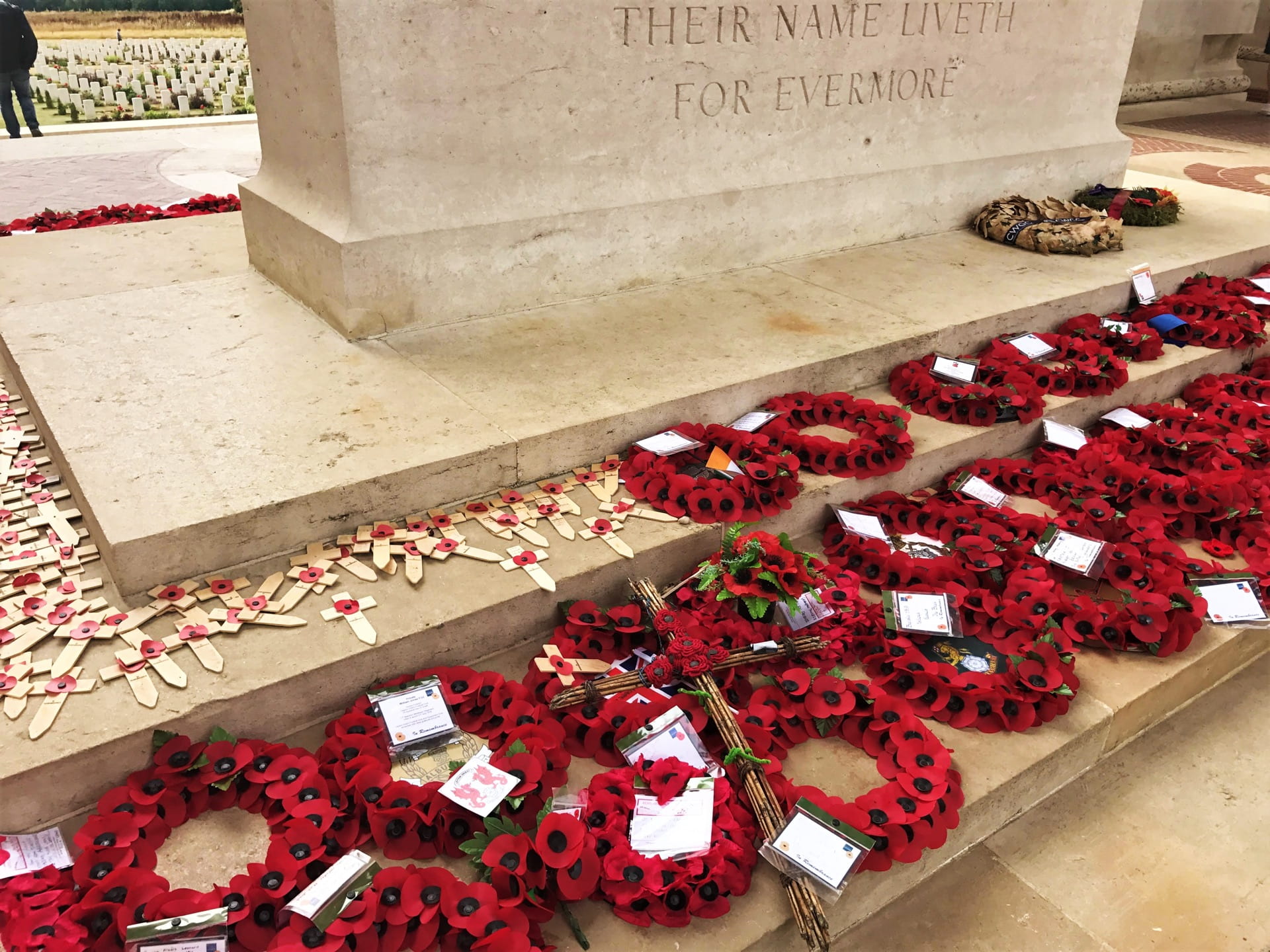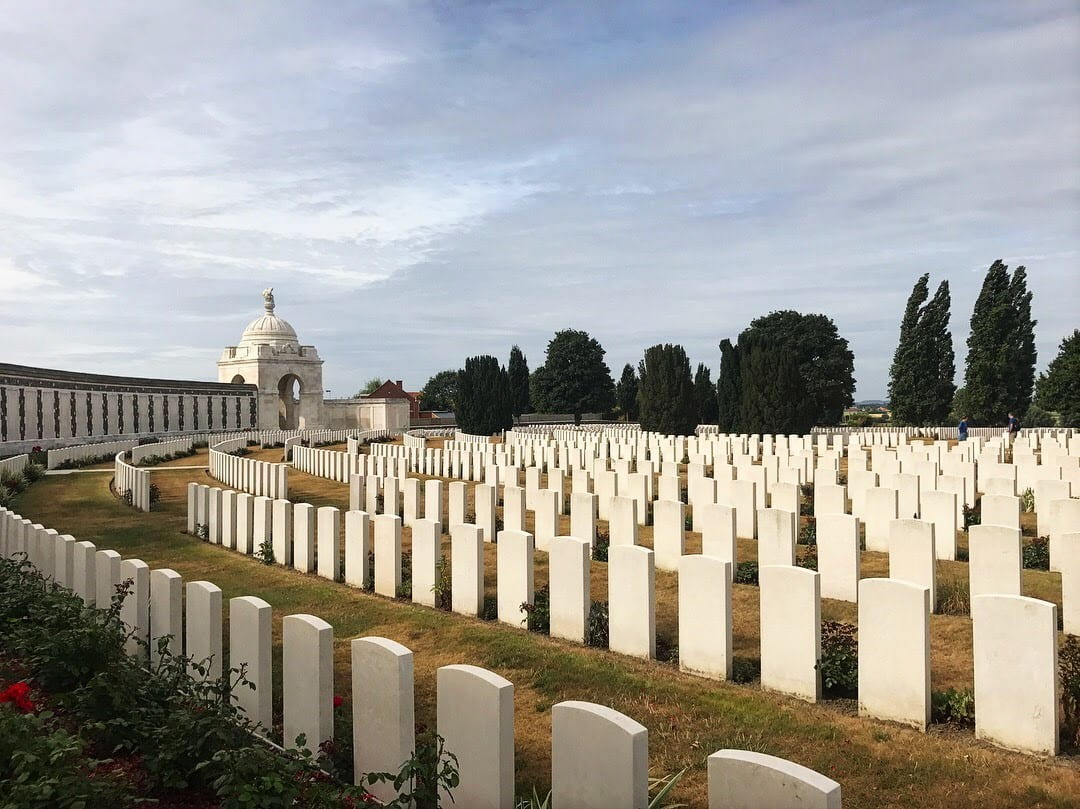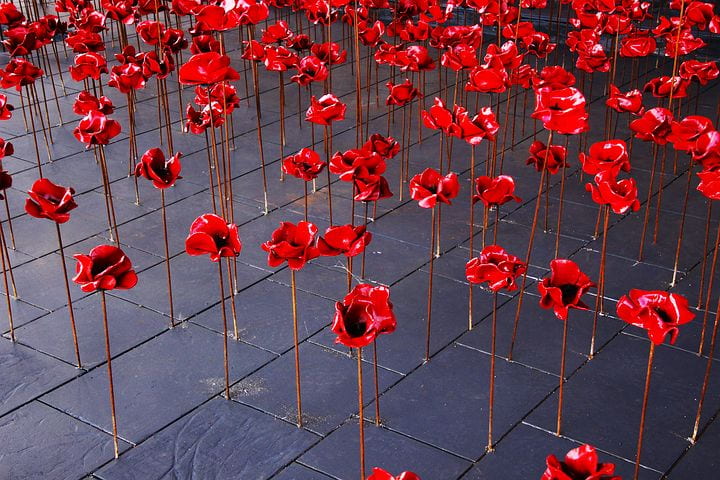 By Jasmin Ring (MEd in Imaginative Education, Secondary School Educator)
By Jasmin Ring (MEd in Imaginative Education, Secondary School Educator)
It’s 10:30 AM on November 11th and the sounds of hundreds of shuffling feet echo through the school. You file into the gym, pausing to take a poppy. You scan the crowd eagerly looking for your friends and you all rush to sit together on the bleachers. Excited whispers fill the room as you chat about which class you get to miss right now for this special assembly. It’s only once the principal’s voice fills the room that you take note of your surroundings. The musicians poised with their instruments at the ready. The cadets and veterans with their starched uniforms and polished boots. Wreaths adorning the cenotaph in the centre of the room. You settle into your seat and passively watch the ceremony unfold in almost the exact same order as last year. Everyone is silent, though more out of obligation than reverence. The ceremony ends and you’re ushered out by a mournful ballad. As you exit the gym, the reverie ends – you’ve returned to reality. By the end of the day the poppies will come off, returned to desk drawers, or discarded until next November. The illusion of acknowledgement is broken, and the day resumes like normal.
Remembrance is a fleeting notion – ironically, it is forgotten for another year.
The education system strives to create active and contributing members of society; an understanding and appreciation of remembrance must be fostered as well. Ideas of remembrance, acknowledgement of veterans, and the impact of past conflicts on the present are rarely discussed outside of the context of Remembrance Day. Educators are in an influential position to help students understand why we remember the actions and sacrifices of veterans. By using an Imaginative Education approach and employing cognitive tools, educators can engage students’ imaginations to bring an abstract idea, remembrance, to life. My research contextualizes notions of remembrance, analyzes educators’ approaches to teaching remembrance, and offers resources and suggestions to help students view remembrance through different perspectives and connect with the past on a personal level.
Although I am extremely passionate about encouraging participation in acts of remembrance and creating learning opportunities year-round, I am acutely aware that many people are less interested. This widespread apathy among students is concerning because it is crucial to acknowledge and learn from the past. When students dutifully partake in acts of remembrance each November, many of them are just going through the motions. They are lacking engaging educational experiences that would inspire a true interest and deeper appreciation for the topic.
This realization inspired the main question(s) in my research:
How are notions of remembrance and Canadian military history taught in schools today, and how can educators create authentic, meaningful, and memorable learning experiences?

As I first explored these as potential topics for my Action Research project, I found myself thinking of all the resources I have come across over the years and that I use in my own lesson planning. In conversations with colleagues and classmates, I discovered that many people were unaware of the multitude of free resources available to help them teach and discuss remembrance. Thus, a sub-question emerged:
What resources are available to help educators teach remembrance and military history?
At the end of this paper, you will find a comprehensive “Educators’ Resource Package” to help teachers incorporate remembrance and military history into their classrooms. There are resources suitable for all age groups that cover a variety of topics.
Working as a Teacher-Teaching-On-Call (TTOC) over the past four years, I have noticed that notions of remembrance are only discussed in the lead up to Remembrance Day. Even then, they are rarely mentioned outside of the Social Studies classroom.
Remembering the actions and sacrifices of Canadians who fought in conflicts or served on peacekeeping missions can lead to a greater appreciation of past generations. For hundreds of years, Canadians have proven their valour and determination in various theatres of war. We remember the sacrifices they made so that we may live freely. We owe debts of gratitude to those who chose to serve our country and perform duties that we cannot. It is important that their stories are kept alive and that we honour them every day, not just on November 11th.

It is time that Remembrance Day ceremonies reflect the diverse nature of our veterans and armed forces members. Many of our students are first- or second-generation Canadians. They may not have a personal connection to a Eurocentric version of remembrance. In order to help them feel emotionally connected to the notion of remembrance, we must find ways to make it more relatable. There are countless narratives, experiences, and stories that are waiting to be shared. For our students to find meaning in acts of remembrance, we must bring these narratives in from the margins of history and into the forefront of public consciousness. The sacrifices of Indigenous, Sikh, and Black veterans, and other minorities must be recognized. Educators can create opportunities for students to discover and discuss these newly revealed narratives. My resource package includes countless resources to help achieve this.
As students study topics related to remembrance they are acting as witnesses to the sacrifices of those who came before them. We want them to feel empowered to share the importance of remembrance with their fellow Canadians. When we study the past, we are exploring our shared history as humankind. Acknowledging the past, even when it makes us uncomfortable, can lead to greater empathy, reconciliation, and understanding. An imaginative understanding of the past will be richer, more well-rounded, and more impactful.
I hope all educators will find the following resource package inspiring and helpful. It contains dozens of suggestions for including remembrance in the classroom and outlines how various cognitive tools could be employed. There is a selection of resources appropriate for all grade levels, representation of forgotten narratives, and bilingual options. Students’ imaginations will be fuelled, and educators’ teaching transformed.
About The Author
Jasmin Ring is an educator in the Surrey School District. She recently graduated from Simon Fraser University with a Master of Education, and previously completed a Bachelor of Arts and Bachelor of Education. She is passionate about history, genealogy, and travel. Learn more about her research: Remembrance in the Classroom: Creating Imaginative Experiences and Emotional Connections.
Explore This Resource
